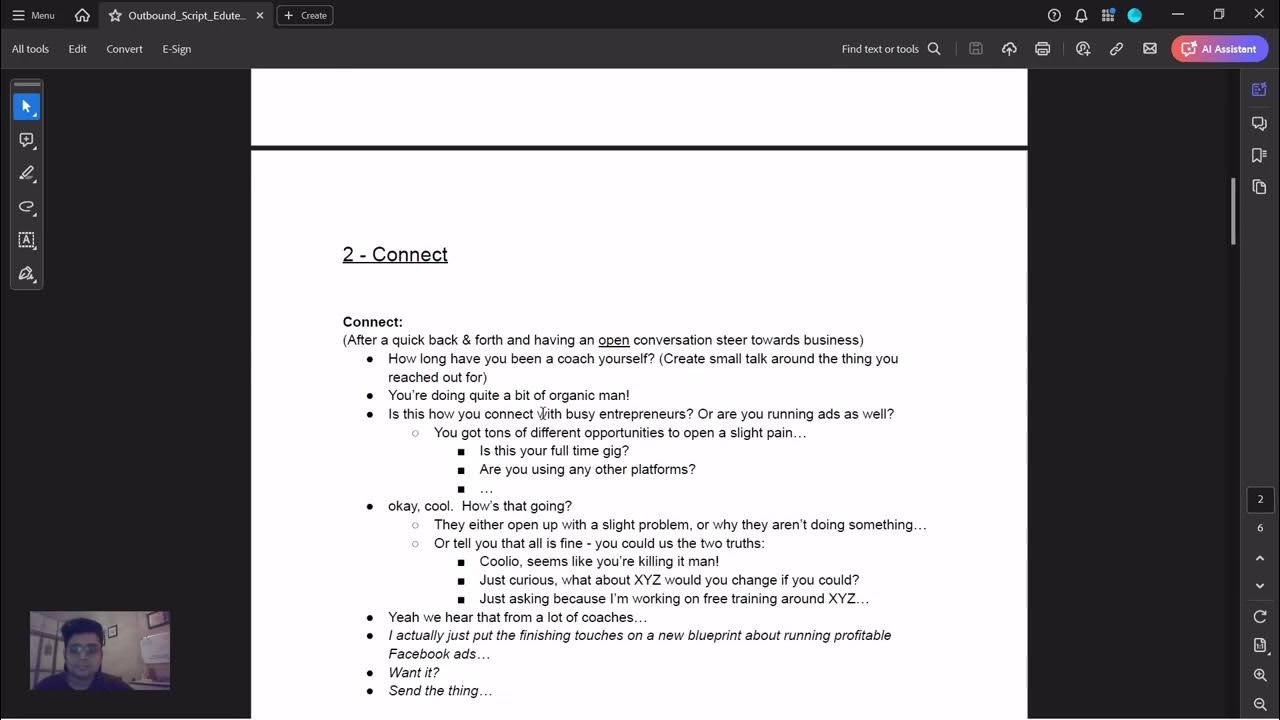30-Minute Presentation Framework Turns Strangers Into High Ticket Clients
Summary
TLDRThe video introduces a proven 30-minute presentation framework for converting strangers into paying clients. It breaks down the framework into three phases: setting the stage to hook the audience's attention, providing valuable training content that wows them without revealing everything, and inspiring them to book a call to discuss your high-ticket coaching. Detailed explanations are provided on structuring each phase into three strategic elements to smoothly guide the viewer from intrigued to invested. This framework is ideal for webinars and videos and has generated over $20 million in online sales across industries.
Takeaways
- 😀 This framework turns strangers into paying clients in 30 minutes
- 👌 It works for webinars, presentations, and sales videos
- 💰 It has generated over $20 million in online sales
- 🔑 It has 3 key sections: Setting the stage, Training, Hand raise
- 🎯 Setting the stage prepares and hooks the audience in 5-10 mins
- 📈 The training gives value to position your offer in 20 mins
- ✋ The hand raise gets them to commit to a call with you
- ⏱ Each section has 3 parts to make it complete but not overwhelming
- 😊 Give lots of "wow" moments in training so they buy the "how" later
- 🚨 Use urgency in the hand raise to get them to book a call
Q & A
What is the core framework that has generated over $20 million in online sales?
-The 30-minute framework for turning strangers into ready-to-buy prospects using webinars, presentations, or sales videos.
What are the 3 phases of this sales framework?
-The 3 phases are: 1) Setting the stage, 2) The training, 3) The handrail/CTA.
How long should the 'Setting the Stage' section be?
-The 'Setting the Stage' section should be 5-10 minutes.
What are the 3 elements of the 'Setting the Stage' section?
-The 3 elements are: 1) The hook, 2) Displaying understanding, 3) Talking about your authority/credibility.
What is the purpose of the 'Hook' in the framework?
-The purpose of the 'Hook' is to grab the audience's attention in the first 2-3 minutes and convince them they are in the right place to get value.
What is the goal of the 20-minute 'Training' section?
-The goal is to provide the audience with value and 'wow' moments to position the coach's offering, without giving away the full 'how'.
How should the 'Training' section be structured?
-It should be split into 3 key training points that provide value but also position the coach's solutions.
What is the purpose of the 'Inspire Change' part of the CTA?
-It aims to convince the audience they need to make a change based on what they just learned, rather than going back to their old ways.
How should the coaching call invitation be framed?
-As an opportunity to have a conversation and see if working together is a good fit, not as a free strategy or coaching session.
What is the third part of the CTA section?
-Creating some urgency by mentioning limited availability and spaces filling up fast.
Outlines

Cette section est réservée aux utilisateurs payants. Améliorez votre compte pour accéder à cette section.
Améliorer maintenantMindmap

Cette section est réservée aux utilisateurs payants. Améliorez votre compte pour accéder à cette section.
Améliorer maintenantKeywords

Cette section est réservée aux utilisateurs payants. Améliorez votre compte pour accéder à cette section.
Améliorer maintenantHighlights

Cette section est réservée aux utilisateurs payants. Améliorez votre compte pour accéder à cette section.
Améliorer maintenantTranscripts

Cette section est réservée aux utilisateurs payants. Améliorez votre compte pour accéder à cette section.
Améliorer maintenantVoir Plus de Vidéos Connexes

The Only Marketing Strategy You Need to Make $1,000,000

The ONLY Sales Page You Need To Make $10k/month

Best Copywriting Niches In 2024 (Where To Find $3k/mo Clients For Beginners)

How To Start Freelancing For Beginners | Mastering Freelancing: Your Step-by-Step Roadmap

outbound appointment setting script

How to Find the Top 1% Stocks ? My Step By Step Stock Selection Framework
5.0 / 5 (0 votes)
